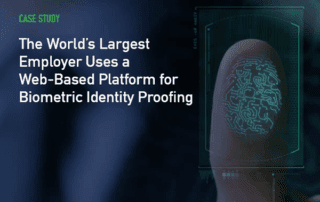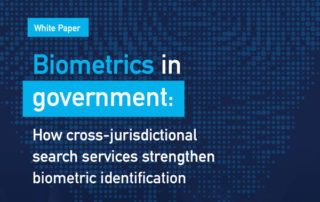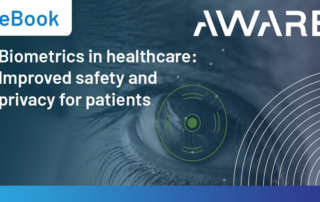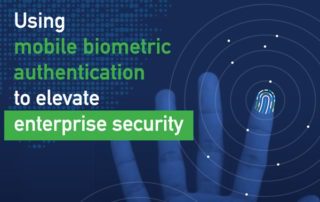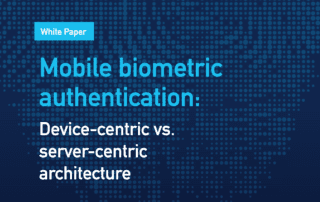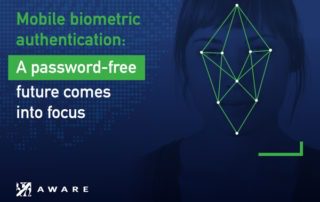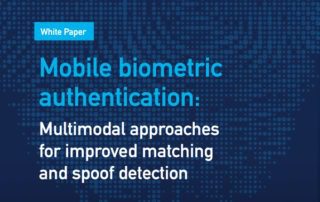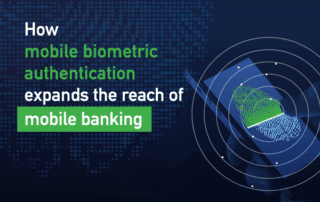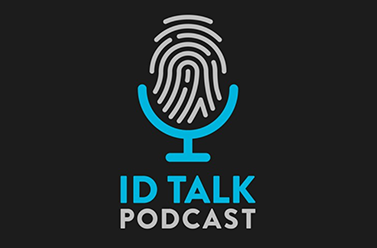The World’s Largest Employer Uses a Web-Based Platform for Biometric Identity Proofing | Case Study
Case Study The World’s Largest Employer Uses a Web-Based Platform for Biometric Identity Proofing The US Department of Defense uses Aware’s WebEnroll™ platform on 3,500 workstations for browser-based biometric enrollment and data management to make their background check system more secure and its maintenance more efficient. The U.S. Department of Defense workforce consists of 1.4 million men and women in uniform, and over 800,000 civilian personnel. The Defense Manpower Data Center (DMDC) is the agency responsible for administering the DOD’s personnel-related tasks, including background checks for all in-uniform and civilian employees. Each year, thousands of new employment applications [...]
Biometrics in government: how cross-jurisdictional search services strengthen biometric identification | White Paper
White Paper Biometrics in government: how cross-jurisdictional search services strengthen biometric identification Governments worldwide rely on passports and the relatively limited biographic information they contain for identification of citizens in a variety of critical applications, such as immigration and border management. But they are increasingly using biometrics to augment their identity proofing efforts. Biometrics such as a fingerprint, face, and iris are more unique, consistent, and fraud-resistant than simple biographics like name and date of birth, making them useful as a conclusive identifier. This is not surprising, considering that the most critical data on passports is arguably the [...]
Biometrics in healthcare: Improved safety and privacy for patients | eBook
Biometrics in healthcare: Improved safety and privacy for patients Biometrics Are Coming to Healthcare: Why Now? Global healthcare has shifted away from its reliance on paper-based medical records toward use of electronic health records (EHR). The benefits of using EHRs to quickly retrieve patient data include: Accurate and up-to-date information at the point of service Highly coordinated and efficient care Secure sharing of patient data among physicians Fewer medical errors Safer prescribing practices But these benefits depend on hospitals, clinicians, and other healthcare facilities to accurately verify patient identities during all medical encounters. Some healthcare institutions have addressed [...]
Using biometric authentication to elevate enterprise security | eBook
Using biometric authentication to elevate enterprise security Biometric authentication in the enterprise? It’s just a matter of time Mobile biometric authentication is officially here to stay. Most of today’s leading devices come with native biometric sensors, and virtually all have cameras, microphones and touchscreens that can be used for biometric authentication. Consumers have embraced this transformation; 86 percent have shown interest in biometric authentication according to research by Visa. Passwords, PINs, and knowledge-based authentication are steadily losing ground to biometrics as a primary means of authentication among personal users. Biometric adoption among enterprise users has moved more slowly, [...]
Mobile biometric authentication: Device-centric vs. server-centric architecture | WHITE PAPER
White Paper Mobile biometric authentication: Device-centric vs. server-centric architecture MULTIPLE BIOMETRIC MODALITIES FOR AUTHENTICATION CAN ACHIEVE HIGHER BIOMETRIC PERFORMANCE. Introduction Biometrics use “inherent” factors (something the user is) to authenticate a user’s identity. Relative to knowledge- and possession-based authentication methods (something the user knows and something the user has), inherent authentication factors like biometrics are difficult to steal and spoof. We can’t easily tell when a fraudster uses a stolen password or mobile device, but with biometrics and liveness detection we can better detect when a fraudster is at work so that their access can be prevented. Download [...]
Mobile biometric authentication: A password-free future comes into focus
Mobile biometric authentication: A password-free future comes into focus Download PDF here if you are having trouble viewing. https://www.aware.com/wp-content/uploads/2023/07/The-Future-of-Authentication-2023.pdf
Mobile biometric authentication: Multimodal approaches for improved matching and spoof detection | WHITE PAPER
White Paper Mobile biometric authentication: Multimodal approaches for improved matching and spoof detection Identity fraud: a trillion dollar problem The vast majority of modern authentication implementations strive to maximize both security and convenience; that is, to: Make it as difficult as possible for a fraudster to steal or spoof the rightful user’s authentication factors (e.g. device, password, token, biometric). Avoid interference with access to the protected asset or service for the rightful user. Dissuade the user from circumventing the intended security mechanisms. Multifactor authentication (MFA) aims to meet these objectives by making it harder for fraudsters to defeat security mechanisms without adding inconvenience for the user. Mobile authentication methods often use two authentication [...]
How Biometrics Expand the Reach of Mobile Banking
How Biometrics Expand the Reach of Mobile Banking Download PDF here if you are having trouble viewing. https://www.aware.com/wp-content/uploads/2022/12/eBook_Biometrics-Mobile-Banking_single-pages_1222.pdf The Mobile Banking Opportunity For financial institutions, mobile banking is a cost-effective way to reach new consumers. The technology offers financial inclusion and unprecedented convenience. The Nielsen Mobile Shopping, Banking and Payment Survey found 47 percent of consumers across the globe used their mobile phones to check their account balances at least once in the six months prior to March 2016. 42 percent said they had used their mobile devices to pay bills. More plan to partake in such [...]
